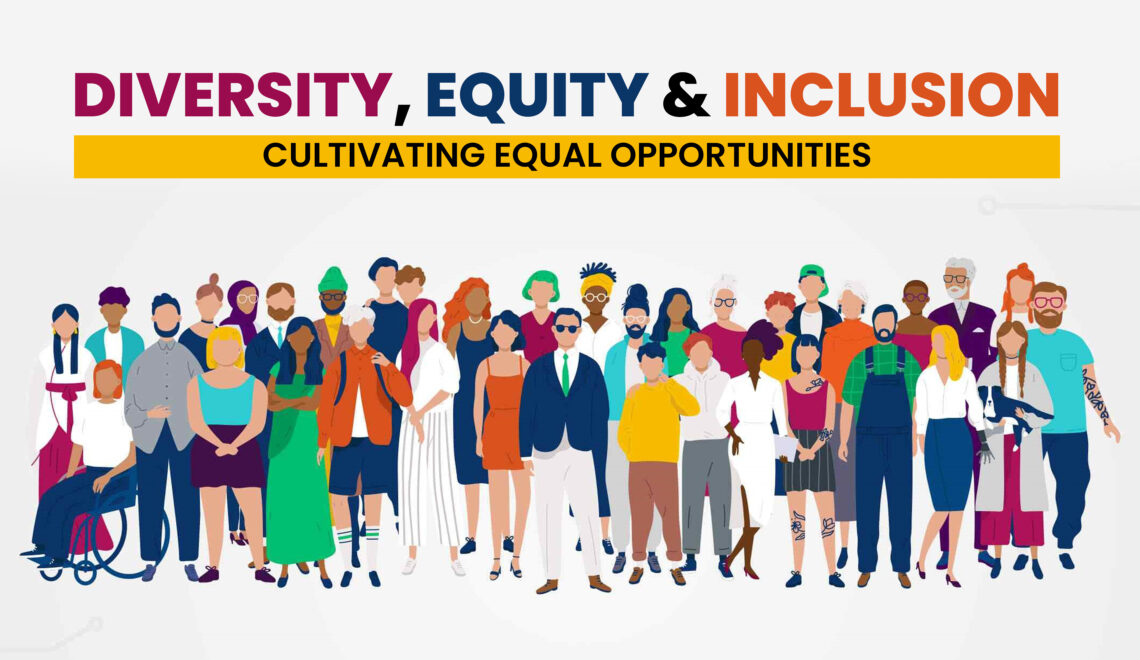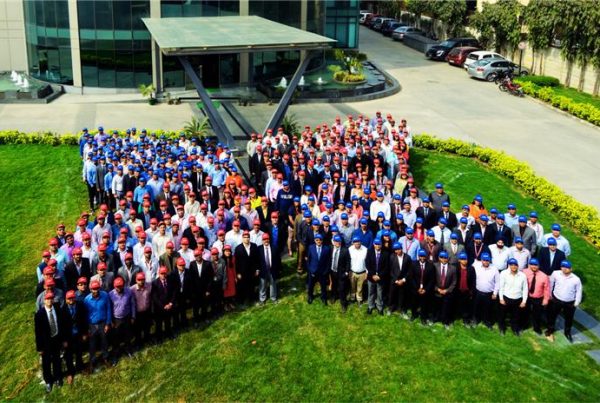Understanding Diversity:
Today, the concept of diversity has transformed from being a governmental or legal obligation to a strategic priority. The aim of attaining sustainable competitive advantage and the need to become an employer of choice has also instigated organizations worldwide to embrace the concept of diversity. So it is no longer possible to ignore the pervading influence of diversity in organizations as well. But the mere manifestation of diversity or embracing the concept of diversity can’t translate into success. Organizations have to manage diversity by celebrating, valuing, and actively encouraging the diversity of the workforce and with globalization & the expansion of business, management of diversity has become a top priority for top executives of organizations worldwide top management.
The word ‘diversity’ comprises numerous human differences like age, race, gender, abilities, education, disabilities, religion, and culture. These can be along the dimensions of race, ethnicity, gender and sexual orientation, socio-economic status, age, religious beliefs, physical abilities, political beliefs, and other ideologies. In other words, diversity refers to the understanding that each individual is different. And for effective management, these differences must be recognized in an organizational environment.
In today’s spectrum, diversity also includes the specially-abled, people from economically backward classes, people across all age groups, genders, different geographies & communities without creating any reservations no matter in which group an individual falls under. Diversity also paves the way for affirmative action and equal employment opportunity.
Inclusion, Equity and Belonging:
Equity:
Equity is about levelling the start point of the race. It focuses on people and ensures that they get the same opportunities or resources. It recognizes that each individual or group has different circumstances and allocates the opportunities and resources required to reach an equal outcome.
The difference between equality and equity must be emphasized. Equality achieves this through treating everyone the same regardless of their needs. On the other hand, equity achieves this by treating people differently depending on their needs.
Inclusion:
An inclusive workplace is one where people with differences and disabilities feel welcome and valued for their contributions and equal opportunities for advancement. It is a place where people feel safe disclosing their disabilities that aren’t visible. Inclusion could mean the following:
- Having a voice
When employees feel like they “have a voice,” which means they are allowed to voice their opinions without fear of being judged.
- Belonging
An employee’s sense of connection to their company is built on belonging — the feeling that you’re a part of an environment that knows and values you. But with today’s hybrid working environment, creating a sense of ‘belongingness’ is getting more and more challenging.
- Sense of uniqueness
Just like employees need a sense of belongingness or acceptance, they also need to feel unique among their peers for their strengths and experiences. Employees can feel motivated and important if a culture of uniqueness is pervasive.
- Feeling valued
When the employees feel that their voice and opinions are appreciated, they feel a greater sense of value and satisfaction.
- Learning and development
Employees who have access to learning and development opportunities know that their company cares and is serious about their aspirations and growth.
- Collaborative environment
Regardless of your role or department, a collaborative environment can help break down silos and promote the ethics of inclusion in an organization.
- Access to resources
Resources like support from managers, trainers, consultants, or diversity and affinity groups help employees know their organization is committed to their well-being and growth.
- Strategic alignment
Strategic alignment requires companies to explain why an inclusive workplace is important so that leaders, managers, and employees can put the strategy into action.
According to research by the Limeade Institute and Artemis, employees who feel included:
- Are 28% more engaged at work
- Have 19% greater well-being in their lives
- Are 43% more committed to their company
- Are 51% more likely to recommend their company as a great place to work
- Typically intend to stay with their company three times longer
Belonging:
Belonging is about feeling seen, heard, and accepted by your organization. Belonging makes one feel safe and comfortable. Further, belonging makes you loyal, motivates employees to get more involved and encourages more people to join your organization. Knowing that you matter as an essential part of a team and that you can be your authentic self without consequence creates more dedicated & credible employees.
Importance of DEIB
With COVID 19 changing the way we live & work, workplace diversity has become a strategic management practice.
Managing DEIB aims to provide tangible benefits to the company is seen as a business strategy aimed at tapping the peerless potential of employees in an organization to give the organization a competitive advantage. Executives understand that companies can’t be successful on a global platform if they don’t have a diverse and inclusive workforce. Diversity is necessary to nurture creativity, drive innovation, and formulate new business strategies. A good mix of employees would lead to new ideas, products, and services and foster out-of-the-box thinking.
DEIB is a Top-Down approach. It begins with leadership teams and percolates downwards.
Again the word diversity should not be perceived as only ‘Gender Diversity’ but organisations who are making a start with this perspective must be encouraged. Today’s hybrid working culture supports diversity management. Companies can attract the best talent globally and save on steep relocation costs. People with disabilities can, work from the comfort of their homes, women who have taken sabbaticals due to child care can now return to work and still have a fair work life balance. The talent pool that can be created has no bounds.
Challenges in Managing Diversity
However, the question of how diversity should be managed at the Senior leadership level is not an easy one. With the mixture of diverse cultural backgrounds that include gender, age, educational differences, abilities, and experiences, an organization has to be quick to respond to business opportunities more creatively and rapidly.
More importantly, if diversity is not managed appropriately, there will be a potential for higher voluntary employee turnover, difficulty in communication, and interpersonal conflicts. It could impact organizational performance through declining revenues and labour issues.
Diversity cannot be achieved only by recruiting different types of people and cannot work in seclusion. Equity, Inclusion, and Belongingness ingredients play a vital role in making it a tasteful recipe for any organization.









